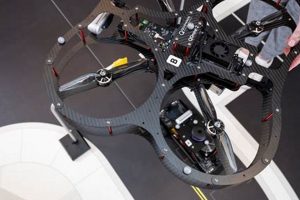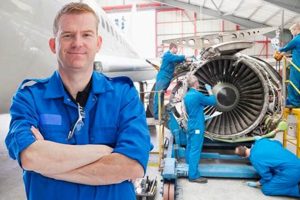Aerospace engineers employ a diverse set of programming tools to tackle complex problems within the field. These tools are essential for tasks ranging from simulating flight dynamics and controlling spacecraft to designing efficient aircraft structures and analyzing vast datasets. The selection of a specific programming language often depends on the particular application and the existing software infrastructure within an organization.
The ability to utilize programming skills provides a significant advantage in aerospace engineering. It enables the development of customized solutions, automates repetitive tasks, and facilitates data-driven decision-making. Historically, FORTRAN played a prominent role in aerospace due to its computational efficiency, but modern applications have led to the adoption of a wider range of languages, each offering unique strengths.
The following sections will explore commonly utilized languages in aerospace engineering, highlighting their typical applications and the reasons for their prevalence in various aerospace disciplines. We will delve into languages used for numerical simulations, control systems, data analysis, and other critical aspects of aerospace design and operation.
Programming Language Utilization in Aerospace Engineering
Effective application of programming languages is crucial for success in aerospace engineering. The following provides practical guidance for aspiring and practicing engineers seeking to optimize their programming skillset within the aerospace domain.
Tip 1: Emphasize Proficiency in Python: Python’s versatility and extensive libraries make it invaluable for data analysis, simulation scripting, and automation tasks common in aerospace. Prioritize developing strong Python skills.
Tip 2: Acquire a Foundation in MATLAB: MATLAB remains a staple for numerical computation and algorithm development in aerospace. Familiarity with its syntax and toolboxes is essential for many engineering workflows.
Tip 3: Understand C/C++ for Real-Time Systems: For embedded systems and real-time control applications, C/C++ provide the necessary performance and control. Develop skills in these languages for applications involving hardware interaction.
Tip 4: Familiarize Yourself with FORTRAN for Legacy Systems: While newer languages are prevalent, FORTRAN persists in older aerospace software. Gaining a working knowledge of FORTRAN can be beneficial for maintaining or interacting with legacy codebases.
Tip 5: Learn Simulation Software Languages: Software packages such as ANSYS, Nastran, and OpenFOAM often use specific scripting languages or APIs (e.g., Python scripting within ANSYS). Proficiency in these languages enhances simulation capabilities.
Tip 6: Explore Specialized Aerospace Libraries: Investigate libraries specifically designed for aerospace applications, such as those for astrodynamics, aerodynamics, or control systems. These libraries can significantly streamline development efforts.
Tip 7: Prioritize Code Quality and Documentation: Aerospace software often requires high levels of reliability and maintainability. Emphasize writing clean, well-documented code following established industry standards.
By mastering these programming languages and practices, aerospace engineers can significantly enhance their capabilities in design, analysis, and implementation. A strong programming foundation is essential for contributing to the advancement of aerospace technology.
The subsequent sections will examine the importance of continuous learning and adaptation in the evolving landscape of aerospace software development.
1. Numerical simulation languages
Numerical simulation languages form a crucial component of the programming landscape employed by aerospace engineers. The complexity inherent in aerospace design and analysis necessitates sophisticated computational tools to model physical phenomena, predict system behavior, and optimize performance.
- Role in Design and Analysis
Numerical simulation languages enable engineers to create virtual models of aircraft, spacecraft, and their components. These models allow for the analysis of aerodynamic forces, structural integrity, thermal behavior, and other critical parameters before physical prototypes are built. Simulation can identify potential design flaws and optimize performance, reducing development time and costs.
- Commonly Used Languages
While specialized simulation software packages are widely used, the underlying computations often rely on core programming languages. FORTRAN, historically favored for its computational efficiency, remains relevant for legacy codes. MATLAB, with its extensive toolboxes for numerical analysis and visualization, is also prevalent. Python, with libraries like NumPy and SciPy, is increasingly adopted for pre- and post-processing of simulation data.
- Application Examples
Examples of numerical simulation in aerospace include computational fluid dynamics (CFD) to analyze airflow around aircraft, finite element analysis (FEA) to assess structural stress under load, and thermal analysis to predict heat transfer in spacecraft components. These simulations provide valuable insights for optimizing aerodynamic efficiency, ensuring structural safety, and managing thermal control systems.
- Importance of Language Selection
The selection of a specific numerical simulation language depends on several factors, including the complexity of the problem, the availability of relevant libraries and tools, and the computational resources available. Expertise in multiple languages provides aerospace engineers with the flexibility to choose the optimal tool for each task, maximizing the accuracy and efficiency of their simulations.
The effective utilization of numerical simulation languages is inextricably linked to the core programming skillset of aerospace engineers. Proficiency in these languages, coupled with a deep understanding of the underlying physical principles, empowers engineers to develop innovative designs, improve system performance, and ensure the safety and reliability of aerospace vehicles.
2. Control systems programming
Control systems programming constitutes a vital subfield within aerospace engineering, directly impacting the performance, stability, and autonomy of aerospace vehicles. The implementation of these systems relies heavily on specific programming languages, forming a crucial link to broader software engineering practices within the discipline.
- Real-time Operation
Control systems often demand real-time operation, requiring languages capable of providing deterministic performance and minimal latency. C and C++ are frequently employed in such applications due to their ability to directly interact with hardware and their inherent efficiency. These languages facilitate the precise timing necessary for stable control loops in flight management systems and spacecraft attitude control.
- Embedded Systems Integration
Aerospace control systems are typically embedded within specialized hardware. Programming languages must be compatible with these embedded environments, often involving cross-compilation and hardware-specific considerations. The selection of a language is therefore constrained by the capabilities of the target processor and the available development tools, often necessitating a deep understanding of both hardware and software interfaces.
- Model-Based Development
Model-based development, utilizing tools such as MATLAB and Simulink, provides a structured approach to control system design. Code can be automatically generated from these models, often targeting C or C++ for implementation. This approach streamlines the development process and facilitates verification and validation, ensuring the reliability of the control system software.
- Fault Tolerance and Redundancy
Aerospace control systems often incorporate fault tolerance and redundancy mechanisms to ensure continued operation in the event of component failures. Programming languages must support the implementation of these strategies, including error detection, fault isolation, and system reconfiguration. The complexity of these systems requires careful consideration of code structure, modularity, and testing procedures.
The selection of a programming language for control systems in aerospace engineering is driven by stringent requirements for real-time performance, hardware compatibility, and reliability. Languages such as C and C++, coupled with model-based development tools, are commonly used to address these challenges, highlighting the critical role of these languages in ensuring the safety and effectiveness of aerospace vehicles.
3. Data analysis tools
Aerospace engineers generate and collect vast quantities of data from simulations, wind tunnel tests, flight tests, and operational systems. Effective analysis of this data is crucial for design optimization, performance monitoring, failure analysis, and safety improvements. The choice of programming language significantly impacts the efficiency and effectiveness of these analytical efforts. Data analysis tools are integral, frequently determining the practical application of “what programming language do aerospace engineers use.” For instance, the selection of Python, with its rich ecosystem of data science libraries such as NumPy, SciPy, Pandas, and Matplotlib, directly enables complex statistical analyses and visualizations of aerodynamic performance data derived from computational fluid dynamics simulations. Similarly, the application of MATLAB for signal processing facilitates the analysis of sensor data from flight tests to identify structural vibrations or control system anomalies. These examples illustrate the direct causal relationship: the need for robust data analysis drives the adoption of specific programming languages that provide the necessary functionality.
The importance of data analysis extends beyond simply interpreting results; it enables predictive maintenance, anomaly detection, and the development of data-driven models for system optimization. Consider the analysis of engine performance data collected from commercial aircraft. Programming languages like R or Python can be used to build predictive models that identify potential engine failures before they occur, reducing maintenance costs and improving aircraft safety. In another case, data collected from satellite telemetry can be analyzed using dedicated libraries to detect anomalies in spacecraft subsystems, enabling timely corrective actions to prevent mission failures. The practical significance lies in the ability to extract actionable insights from raw data, thereby improving system reliability, efficiency, and safety.
In conclusion, the selection of programming languages for aerospace engineers is profoundly influenced by the need for robust data analysis tools. Languages offering comprehensive libraries for statistical analysis, data visualization, and machine learning, like Python and MATLAB, are increasingly essential. The challenges lie in managing and processing large datasets, developing accurate models, and ensuring the reliability of the analysis. Understanding this connection is vital for aerospace engineers to effectively leverage data-driven insights, contributing to the advancement and safety of aerospace technology.
4. Embedded systems languages
Embedded systems languages represent a critical subset within the broader array of programming tools employed by aerospace engineers. These languages facilitate the development of software that directly controls and monitors hardware within aerospace vehicles, ranging from flight control systems and engine management units to satellite communication devices and sensor networks. The need for deterministic real-time performance and resource-constrained environments directly influences the selection of specific languages and development practices. A principal example of this is the utilization of C and C++ in developing flight control software for aircraft and spacecraft. These languages offer a balance between performance and control over hardware resources, essential for maintaining stability and responsiveness in dynamic flight conditions. The consequence of improper language selection or coding practices within embedded systems can be catastrophic, potentially leading to system failures or loss of control.
Further illustrating the importance of embedded systems languages is their application in satellite systems. Real-time operating systems (RTOS) coded in languages like Ada or C are used to manage onboard processing, communication, and power distribution. The criticality of these functions demands a high degree of reliability and fault tolerance. Consider the implementation of fault detection and recovery mechanisms within satellite control systems. Programming languages are used to implement algorithms that continuously monitor system parameters, detect anomalies, and trigger corrective actions, such as switching to redundant hardware components. The efficacy of these mechanisms is directly dependent on the choice of language and the quality of the software development process.
In summary, the expertise of aerospace engineers in embedded systems languages is indispensable for developing reliable and efficient aerospace vehicles. The stringent requirements for performance, reliability, and safety necessitate a deep understanding of language capabilities, hardware interfaces, and real-time programming techniques. The ability to translate high-level system requirements into robust, low-level code represents a cornerstone of modern aerospace engineering practice. The ongoing challenge lies in maintaining the integrity of these systems as technology advances, requiring continuous adaptation and adoption of secure coding practices.
5. Automation and scripting languages
Automation and scripting languages form an integral part of the programming toolkit aerospace engineers utilize. These languages serve to streamline repetitive tasks, automate complex workflows, and facilitate integration between disparate software tools. This directly impacts efficiency in design, analysis, and testing processes. Python, with its extensive ecosystem of libraries such as NumPy, SciPy, and the automation library PyAutoGUI, is frequently employed to automate pre- and post-processing of simulation data. In this case, the programming language selected directly dictates the extent to which engineers can automate aspects of their workflows, optimizing overall productivity. For instance, a script might be written to automatically generate reports from simulation outputs, freeing engineers to focus on higher-level analysis and decision-making.
Further exemplifying this connection is the use of scripting languages in managing wind tunnel tests. Automation scripts can control the wind tunnel parameters, collect sensor data, and perform preliminary data analysis in real-time. This reduces the need for manual intervention and ensures consistency across multiple tests. Similarly, in manufacturing processes, automation languages like Python, combined with libraries for robotics control, can be used to program automated assembly lines for aircraft components. The ability to integrate and control these robotic systems through programming is vital for increasing production efficiency and minimizing manufacturing errors. In each of these scenarios, the understanding and proficient use of these languages have direct impact on project timelines and costs.
In conclusion, the proficient use of automation and scripting languages is inextricably linked to the effectiveness of aerospace engineers. Languages such as Python, MATLAB (with its scripting capabilities), and specialized scripting languages within CAE software environments enable efficient task automation, workflow integration, and data-driven decision-making. The challenge lies in mastering these diverse languages and developing scripts that are robust, reliable, and maintainable. A thorough grasp of this aspect of “what programming language do aerospace engineers use” is essential for contributing to the advancement of aerospace technology.
Frequently Asked Questions
This section addresses common inquiries regarding programming languages utilized within the field of aerospace engineering, clarifying their applications and importance.
Question 1: Is one programming language definitively superior for all aerospace engineering applications?
No. The optimal language varies depending on the specific task. FORTRAN may be suitable for computationally intensive simulations, while C/C++ might be preferred for real-time control systems, and Python for data analysis and scripting.
Question 2: To what extent is knowledge of multiple programming languages beneficial for an aerospace engineer?
Proficiency in multiple languages enhances versatility and problem-solving capabilities. It enables the engineer to select the most appropriate tool for a given task and facilitates seamless integration across different software systems.
Question 3: How critical is understanding legacy programming languages, such as FORTRAN, in contemporary aerospace engineering practice?
While newer languages are increasingly prevalent, FORTRAN persists in some legacy aerospace software. Familiarity with it may be necessary for maintaining or interacting with these existing codebases.
Question 4: What role do specialized software packages play in aerospace engineering, and how does programming language knowledge augment their use?
Software packages like ANSYS or MATLAB provide domain-specific functionalities. Programming skills, particularly in scripting languages such as Python, enhance the user’s ability to customize and automate tasks within these environments.
Question 5: How do academic curricula prepare aspiring aerospace engineers for the programming demands of the profession?
Most aerospace engineering programs incorporate coursework covering fundamental programming concepts and commonly used languages. Students may also have opportunities to specialize in areas such as control systems, simulation, or data analysis, further developing their programming skills.
Question 6: Are there specific programming certifications or qualifications that enhance an aerospace engineer’s career prospects?
While formal certifications are not always required, demonstrating proficiency in relevant programming languages and software development methodologies through personal projects or contributions to open-source projects can be beneficial.
The selection and application of programming languages in aerospace engineering are driven by the specific requirements of each task. A solid foundation in multiple languages, coupled with a strong understanding of engineering principles, is essential for success in this field.
The next section will explore the future trends in programming for aerospace engineering.
Conclusion
The exploration of “what programming language do aerospace engineers use” reveals a landscape characterized by diversity and specialization. No single language dominates the field entirely; instead, the choice is dictated by the specific application, performance requirements, and existing software infrastructure. Proficiency in languages such as C/C++, Python, MATLAB, and FORTRAN, coupled with the ability to adapt to specialized software tools, remains essential for success in aerospace engineering. The demand for skilled programmers in areas such as simulation, control systems, data analysis, and embedded systems continues to grow within the industry.
As computational capabilities advance and aerospace systems become increasingly complex, the role of programming languages will only intensify. Continued investment in education, research, and standardization efforts related to software development is crucial for maintaining the United Statess competitive edge in aerospace engineering and ensuring the safety and reliability of future aerospace systems.



![Top Aerospace Engineering Programs in CA [2024 Guide] Innovating the Future of Flight with Reliable Aviation Solutions Top Aerospace Engineering Programs in CA [2024 Guide] | Innovating the Future of Flight with Reliable Aviation Solutions](https://mixaerospace.com/wp-content/uploads/2025/10/th-908-300x200.jpg)



